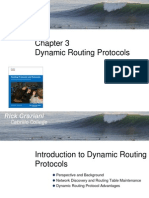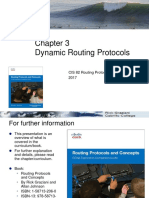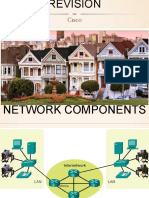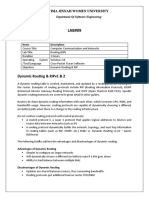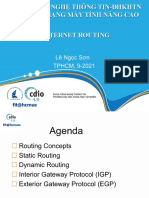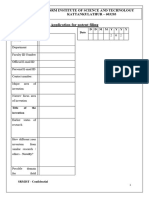0% found this document useful (0 votes)
40 views20 pagesIntroduction Routing Protocol
Dynamic routing protocols dynamically share information between routers, automatically update routing tables when network topology changes, and determine the best path to destinations. Routing protocols are classified as interior gateway protocols used within autonomous systems like RIP, EIGRP, and OSPF, or exterior gateway protocols like BGP used between autonomous systems. Metrics and preferences help routing protocols calculate the best paths.
Uploaded by
loopavoidanceitCopyright
© © All Rights Reserved
We take content rights seriously. If you suspect this is your content, claim it here.
Available Formats
Download as PPT, PDF, TXT or read online on Scribd
0% found this document useful (0 votes)
40 views20 pagesIntroduction Routing Protocol
Dynamic routing protocols dynamically share information between routers, automatically update routing tables when network topology changes, and determine the best path to destinations. Routing protocols are classified as interior gateway protocols used within autonomous systems like RIP, EIGRP, and OSPF, or exterior gateway protocols like BGP used between autonomous systems. Metrics and preferences help routing protocols calculate the best paths.
Uploaded by
loopavoidanceitCopyright
© © All Rights Reserved
We take content rights seriously. If you suspect this is your content, claim it here.
Available Formats
Download as PPT, PDF, TXT or read online on Scribd
/ 20



